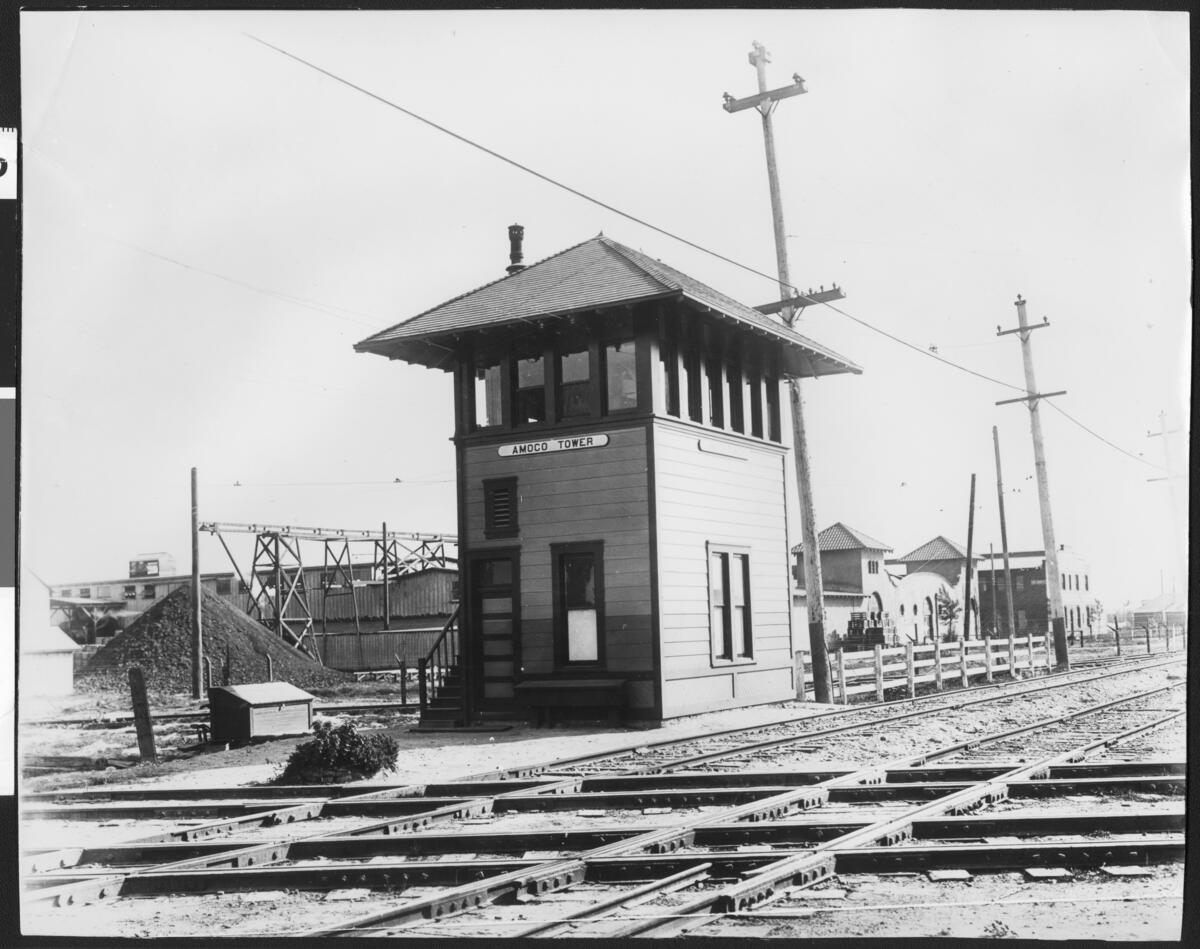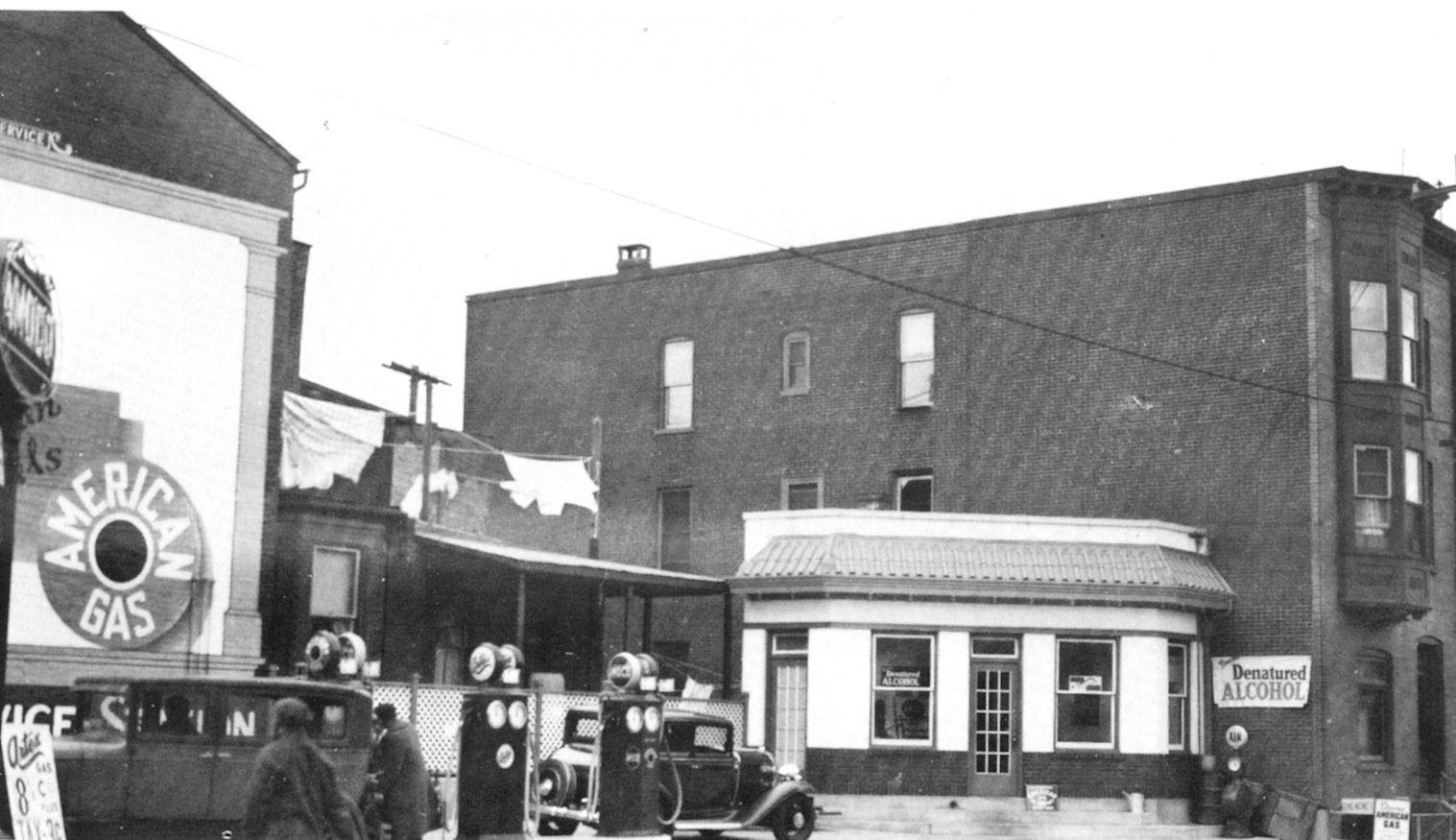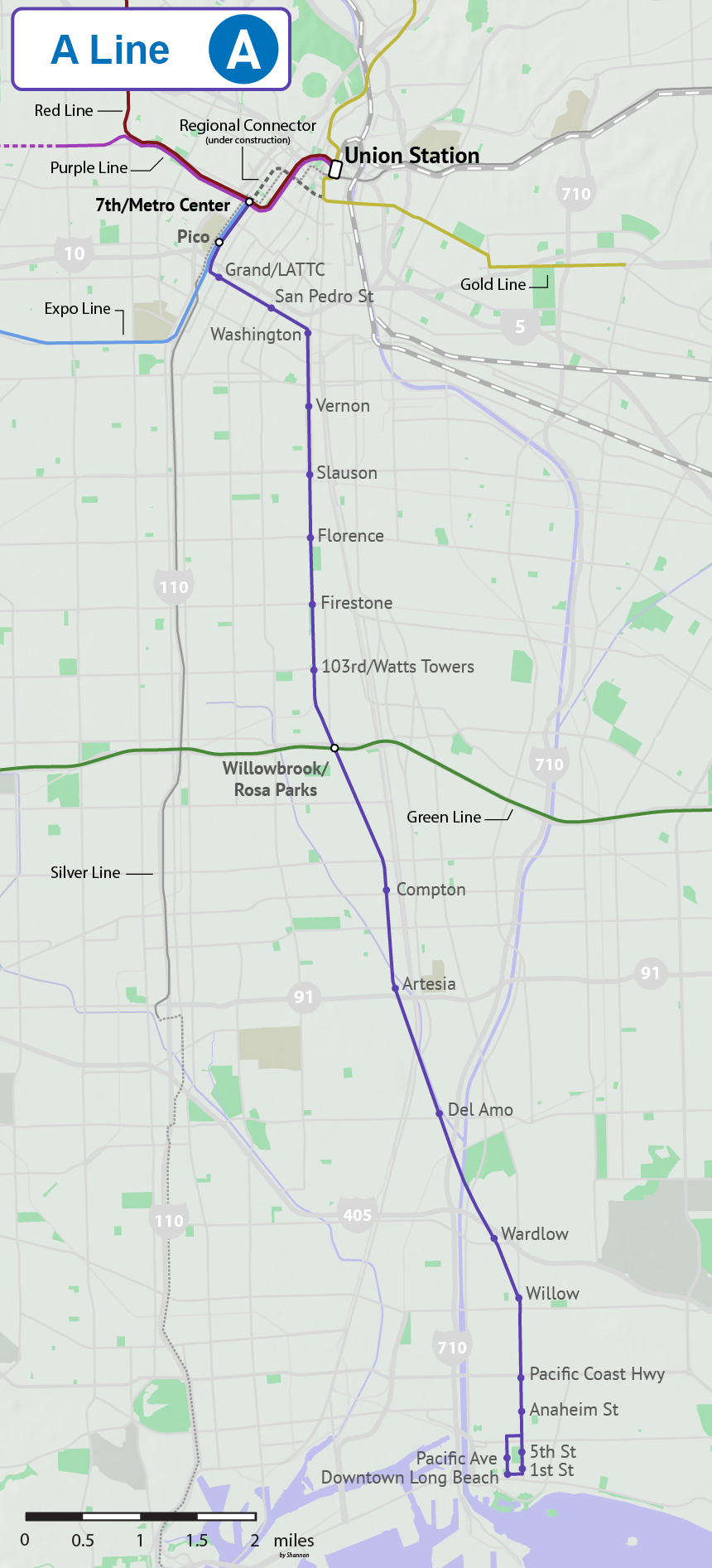|
Amoco Junction
Amoco Junction was a junction on the Pacific Electric Railway's Southern District. It was located in Nevin, South Central Los Angeles at 25th Street and Long Beach Boulevard. It was named after a nearby American Olive Company (AmOCo) plant. It was the junction where the Santa Monica Air Line split off from the Watts, Long Beach Long Beach is a city in Los Angeles County, California. It is the 42nd-most populous city in the United States, with a population of 466,742 as of 2020. A charter city, Long Beach is the seventh-most populous city in California. Incorporate ... and other Southern District Lines. It was one of several points at which a tower crossed the quadruple tracks between Downtown Los Angeles and Watts. Despite being a junction, many lines did not stop at Amoco, which was only served by local cars and the Air Line. Service was provided to Amoco Junction between 1904 and 1958. Though it is located along the route of the Los Angeles Metro A Line, it is not ... [...More Info...] [...Related Items...] OR: [Wikipedia] [Google] [Baidu] |
Amoco Tower
Amoco () is a brand of filling station, fuel stations operating in the United States, and owned by BP since 1998. The Amoco Corporation was an American chemical and petroleum, oil company, founded by Standard Oil Company in 1889 around a oil refinery, refinery in Whiting, Indiana, and was officially the Standard Oil Company of Indiana until 1985. Originally part of the Standard Oil Company trust, it focused on producing gasoline for the new automobile market. In 1911, as part of the break-up of the Standard Oil trust, it became an independent corporation. Incorporated in Indiana, it was headquartered in Chicago, and formally adopted the name Amoco in 1985. Although the Amoco Corporation merged in 1998 into BP Amoco, the Amoco name was resurrected in 2017 as a brand that service station owners could choose to use when they purchased supplies from BP in selected areas of the United States. In 1925, Standard Oil of Indiana absorbed the American Oil Company, founded in Baltimore in ... [...More Info...] [...Related Items...] OR: [Wikipedia] [Google] [Baidu] |
Long Beach Line
The Long Beach Line was a major interurban railway operated by the Pacific Electric Railway between Los Angeles and Long Beach, California via Florence, Watts, and Compton. Service began in 1902 and lasted until 1961, the last line of the system to be replaced by buses. However, the Southern Pacific Transportation Company continued to operate freight on the tracks, as the Union Pacific Railroad still does between Amoco and Dominguez Junction, and in 1990 the Southern California Rapid Transit District opened the Blue Line light rail along the same right-of-way. In addition to the Long Beach service, the line served as a trunk for a number of other interurban lines stretching to Whittier, Yorba Linda, Fullerton, Santa Ana, Balboa, San Pedro, and Redondo Beach. It was four tracks wide north of the junction at Watts, with local service on the outer tracks and long-distance trains bypassing the local stations on the inner tracks. Route The line originated at the 6th and M ... [...More Info...] [...Related Items...] OR: [Wikipedia] [Google] [Baidu] |
Neighborhoods In Los Angeles
This is a list of notable districts and neighborhoods within the city of Los Angeles, Los Angeles, California, present and past. It includes residential and commercial areas and business-improvement districts, but does not include sales subdivisions or sales tracts. The guiding precept is Wikipedia:Notability (geographic features)#Geographic regions, areas and places. AE * Adams-Normandie, Los Angeles, Adams-Normandie * Alsace, California, Alsace * Angelino Heights, Los Angeles, Angelino Heights''The Thomas Guide: Los Angeles County'', Rand McNally (2004), pages N and O * Angeles Mesa, Los Angeles, Angeles Mesa * Angelus Vista, Los Angeles, Angelus Vista * Arleta, Los Angeles, ArletaNeighborhoods , Mapping L.A., ''Los Angeles Times'' * Arlington Heights, Los Angeles, Arlington Heights * Arts Di ... [...More Info...] [...Related Items...] OR: [Wikipedia] [Google] [Baidu] |
Pacific Electric Junctions
The Pacific Ocean is the largest and deepest of Earth's five oceanic divisions. It extends from the Arctic Ocean in the north to the Southern Ocean (or, depending on definition, to Antarctica) in the south, and is bounded by the continents of Asia and Oceania in the west and the Americas in the east. At in area (as defined with a southern Antarctic border), this largest division of the World Ocean—and, in turn, the hydrosphere—covers about 46% of Earth's water surface and about 32% of its total surface area, larger than Earth's entire land area combined .Pacific Ocean . '' Britannica Concise.'' 2008: Encyclopædia Britannica, Inc. The centers of both the |
E Line (Los Angeles Metro)
The E Line (formerly the Expo Line from 2012–2019) is a light rail line that runs between Downtown Los Angeles and Santa Monica. It is one of the seven lines in the Metro Rail system, and is operated by the Los Angeles County Metropolitan Transportation Authority (Metro). The line opened in 2012. The E Line largely follows the right-of-way of the former Pacific Electric Santa Monica Air Line. Passenger service ended in 1953; freight-only service ended by March 1988. Several E Line stations are built in the same location as Air Line stations, although no original station structures have been reused. Originally named the Expo Line after Exposition Boulevard, along which it runs for most of its route, the line was renamed the E Line in late 2019, while retaining the aqua-colored line and icons used to designate it on maps. When the Regional Connector is complete in 2022, the current E Line will be joined with the Eastside portion of the L Line to create an extended E Line, ... [...More Info...] [...Related Items...] OR: [Wikipedia] [Google] [Baidu] |
A Line (Los Angeles Metro)
The A Line (formerly, from 1990-2019, and colloquially known as Blue Line) is a light rail line running north–south between Los Angeles and Long Beach, California, passing through Downtown Los Angeles, South Los Angeles, Watts, Willowbrook, Compton, Rancho Dominguez, and Long Beach in Los Angeles County. It is one of seven lines in the Metro Rail system. Opened in 1990, it is the system's oldest and third-busiest line with an estimated 22.38 million boardings per year . It is operated by the Los Angeles County Metropolitan Transportation Authority. The A Line passes near the cities of Vernon, Huntington Park, South Gate, Lynwood, and Carson. The famous Watts Towers art installation is visible from the train tracks near 103rd Street station. The under-construction Regional Connector will directly link this line to Union Station and into the San Gabriel Valley along the current route of the L Line, resulting in a longer A Line and the elimination of the L Line. Se ... [...More Info...] [...Related Items...] OR: [Wikipedia] [Google] [Baidu] |
Stanford, California
Stanford is a census-designated place (CDP) in the northwest corner of Santa Clara County, California, United States. It is the home of Stanford University. The population was 21,150 at the United States Census, 2020, 2020 census. Stanford is an unincorporated area of Santa Clara County and is adjacent to the city of Palo Alto, California, Palo Alto. The place is named after Stanford University. Most of the Stanford University campus and other core University owned land is situated within the census-designated place of Stanford though the Stanford University Medical Center, the Stanford Shopping Center, and the Stanford Research Park are officially part of the city of Palo Alto. Its resident population consists of the inhabitants of on-campus housing, including graduate student residences and single-family homes and condominiums owned by their faculty inhabitants but located on leased Stanford land. A Neighbourhood, residential neighborhood adjacent to the Stanford campus, Co ... [...More Info...] [...Related Items...] OR: [Wikipedia] [Google] [Baidu] |
Stanford University Press
Stanford University Press (SUP) is the publishing house of Stanford University. It is one of the oldest academic presses in the United States and the first university press to be established on the West Coast. It was among the presses officially admitted to the Association of American University Presses (now the Association of University Presses) at the organization's founding, in 1937, and is one of twenty-two current member presses from that original group. The press publishes 130 books per year across the humanities, social sciences, and business, and has more than 3,500 titles in print. History David Starr Jordan, the first president of Stanford University, posited four propositions to Leland and Jane Stanford when accepting the post, the last of which stipulated, “That provision be made for the publication of the results of any important research on the part of professors, or advanced students. Such papers may be issued from time to time as ‘Memoirs of the Leland Stanf ... [...More Info...] [...Related Items...] OR: [Wikipedia] [Google] [Baidu] |
Watts Line
The Watts Line was a local line of the Pacific Electric Railway that operated between the Pacific Electric Building in Downtown Los Angeles and the Watts Station at 103rd Street in Watts. It was the primary local service for the Southern District, which also included the Long Beach, San Pedro, Santa Ana and Whittier interurban lines. The route operated along the Southern Division's Four Tracks route, with the Watts Line using the outer tracks and the Long Beach line and other limited stop lines using the inner tracks. History The local service operated between 1904 and November 2, 1959. The line was quadruple-tracked in 1907. During the 1910s, its service was combined with the South Pasadena Line of the Northern District. From 1938 to 1950, the line was combined with the Sierra Vista Line, which was the main local line in the Northern District. Streetcars were removed and replaced with a parallel bus service on November 2, 1959. Tracks north of Washington Boulevard wer ... [...More Info...] [...Related Items...] OR: [Wikipedia] [Google] [Baidu] |
Junction (rail)
A junction, in the context of rail transport, is a place at which two or more rail routes converge or diverge. This implies a physical connection between the tracks of the two routes (assuming they are of the same gauge), provided by ''points'' (US: switches) and signalling. Junctions are important for rail systems, their installation into a rail system can expand route capacity, and have a powerful impact upon on-time performance. Overview In a simple case where two routes with one or two tracks each meet at a junction, a fairly simple layout of tracks suffices to allow trains to transfer from one route to the other. More complicated junctions are needed to permit trains to travel in either direction after joining the new route, for example by providing a triangular track layout. In this latter case, the three points of the triangle may be given different names, for example using points of the compass as well as the name of the overall place. Rail transport operations refer to ... [...More Info...] [...Related Items...] OR: [Wikipedia] [Google] [Baidu] |
Santa Monica Air Line
The Santa Monica Air Line was an interurban railroad operated by the Pacific Electric between Santa Monica and downtown Los Angeles. Electric passenger service operated over the line between 1908 and 1953. After abandonment as a freight railroad, most of the route was converted to light rail for use by the Metro E Line. Route Los Angeles to Culver Junction Beginning at the Pacific Electric Building at Sixth and Main streets, the line crossed Los Angeles Street on a viaduct to reach San Pedro Street, where it turned south. It turned from San Pedro onto Ninth Street and ran to a right-of-way. At 25th Street and Long Beach Boulevard, at what was called Amoco (American Olive Company) Junction, the Air Line left the Watts main route and went west on a single track right-of-way diagonally across the city grid until Flower Street, where it joined Exposition Boulevard. At the west end of Exposition, the route followed Jefferson Boulevard to La Cienega, where it generally followed Wash ... [...More Info...] [...Related Items...] OR: [Wikipedia] [Google] [Baidu] |
Workman And Temple Family Homestead Museum
The Workman and Temple Family Homestead Museum is a historic house museum located at 15415 East Don Julian Road in City of Industry, California, that features the homes and private cemetery that belonged to the pioneer Workman-Temple family. Workman House After his arrival in the San Gabriel Valley in 1841, William Workman (1799–1876) bought part of the Rancho La Puente and built his adobe house in 1842. It was enlarged over the years and, by 1870, was remodeled with the addition of brick wings and a second story, as well as impressive exterior decorative details. This renovation was said to have been designed by the first trained architect in Los Angeles, Ezra F. Kysor, designer of the extant Pico House hotel, St. Vibiana's Cathedral, and the Perry House, all in Los Angeles, though there is no known documentation of Kysor's work on the building. The Workman Adobe was placed on the National Register of Historic Landmarks on November 20, 1974 and was added to the Calif ... [...More Info...] [...Related Items...] OR: [Wikipedia] [Google] [Baidu] |



.jpg)





